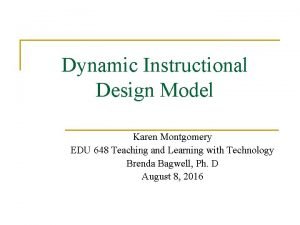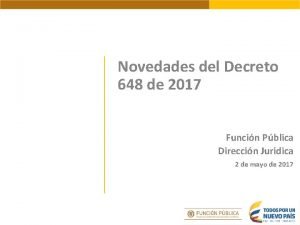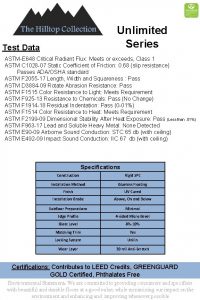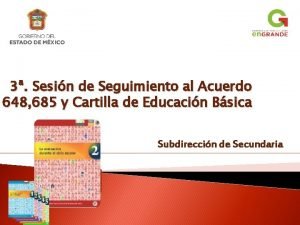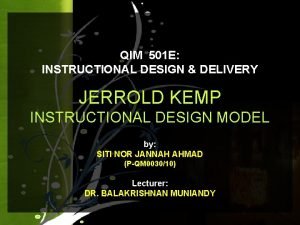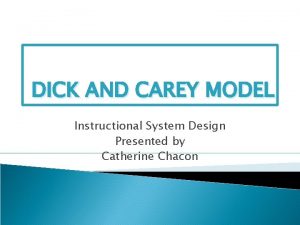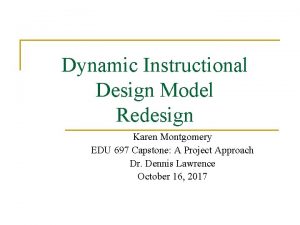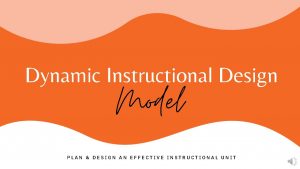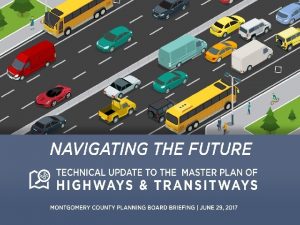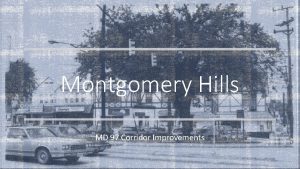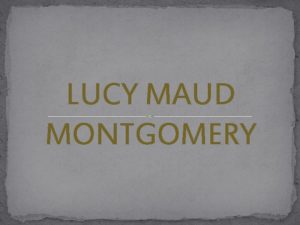Dynamic Instructional Design Model Karen Montgomery EDU 648










- Slides: 10

Dynamic Instructional Design Model Karen Montgomery EDU 648 Teaching and Learning with Technology Brenda Bagwell, Ph. D August 8, 2016

Step 1: Know the Learners Who are you instructing? a) Visual learners b) Kinesthetic Learners c) Auditory Learners d) All of the Above n n Learning Styles You. Tube Video https: //www. youtube. com/wat ch? v=dv. Mex 7 KXLv. M

Know the Learners n n n All of the Above is the correct answer because all three learning styles should be included in instruction. Ask questions about the students Conduct research to learn ways to accommodate all children Learning is at its best when three questions are asked: What? How? Why? Utilize technology by allowing educational games to be a tool for learning

Step 2: State Your Objectives Set Goals for Utilizing Instruction Performance Objective Measures what a student can do Instructional Objective How a student learns Multi-media principle Use different media to teach all learners

Step 3: Establish the Learning Environment n n n What should a 21 st century classroom look like? A positive learning environment that allows students to feel comfortable and confident as learners. (Firestone) Children need a clean, bright, organized space to strengthen learning experiences. (Firestone) Utilize the space where instruction will occur All space should be utilized for means of teaching students

Learning environment refers to the diverse physical locations, contexts, and cultures in which students learn. http: //classroom. 4 teachers. org/

Step 4: Identify Teaching and Learning Strategies n n n There are several strategies that are accessible Teaching strategies are methods used to enagage learners Learning strategies are used to enhance learning www. khanacademy. com This website is a great tutorial for teachers as a response to intervention Students can view the tutorial to help with homework assignments

Step 5: Identify and Select Technologies n n Access online educational websites that are relevant to your instruction Select the appropriate device that students can access with ease Chrome books are great for independent practice on a skill www. abcya. com Bright. Links Projector helps educators to show the content, use audio, and online videos to teach lessons

Summary n Incorporating this design model can help educators teach all students effectively. Each step represents the importance of defining what teaching and learning really is by exploring, navigating, and utilizing these steps to becoming a well rounded teacher. Educators should incorporate all steps to deliver instruction with learning opportunities being implemented.

References n Sharp, Amanda. "Dynamic Instructional Design Model: An Iterative Approach To Design Based On Continual Feedback". 2011. Presentation. http: //67. 20. 112. 29/sharpe_eportfolio/attachments/article/ 5/DID%20 presentation. pdf n Firestone, Mary. "Learning Environment In The Classroom: Definition, Impact & Importance". Lecture. http: //study. com/academy/lesson/learning-environment-in -the-classroom-definition-impact-importance. html
